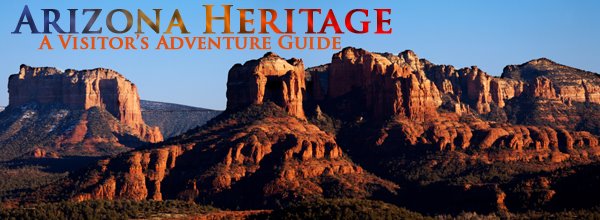
When Hopi dancers have put on the masks and garb of their
katsinas, a ritual that dates to time immemorial, they are putting on far more: their identity.
"The Hopi Indians represent their gods in several ways," wrote anthropologist Jesse Walter
Fewkes in 1899, "one of which is by
personation --by wearing masks or garments bearing
symbols that are regarded as characteristic of those beings. The symbols depicted on these masks and garments vary considerably, but are readily recognized and identified by the Indians."
Another way of representing the gods is through the
katsina "dolls," which today are considered a high art form as well as religious symbols. And while most of the
ceremonies are off limits to outsiders today, many
katsinas (also spelled
kachinas) have been gathered at the Heard Museum in Phoenix, forming perhaps the most popular core of an extensive collection of masterpieces created by the native peoples of the Southwest.
"At each festival in which these supernatural beings are
personated,"
Fewkes wrote, "the symbols are repainted, and continued practice has led to a high development of this kind of artistic work, many of the Indians having become expert in painting the symbols characteristic of the gods."
The advent, several decades later, of a tourism industry that craved the
katsinas led to a similar growth in artistic skills. The collection at the Heard, numbering more than 500, includes many of the earlier carvings, collected by the Harvey Company, and later images gathered by the late Sen. Barry Goldwater.
Arizona's Hopis, like neighboring New Mexico's Zunis, have celebrated their religion with katsina ceremonies since long before the Europeans knew of the Americas. Yet they continue to add new members to the katsina pantheon as they learn more about their universe. Some of the activities introduced by other tribes and by the descendants of the Europeans have even come to be represented.
One of the best ways to learn about the katsinas is by experiencing the Heard Museum's extensive collection, which is part of a vast exhibit called "Native People in the Southwest," which will continue indefinitely at the Phoenix location, 2301 N. Central Ave., Phoenix.
It features nearly 2,000 treasures, the Heard says, including jewelry, cultural items, pottery, baskets, textiles, beadwork and more. And it's not just the little stuff. There's a full-sized Navajo hogan, Hopi piki room, Yaqui ramada and Pueblo oven.
For more information, visit the
Heard website. Before you go, you might want to
learn more about katsinas and about the Hopi. (The art accompanying this article was drawn by a native artist contracted by
Fewkes for his report for the Bureau of American Ethnology.)








